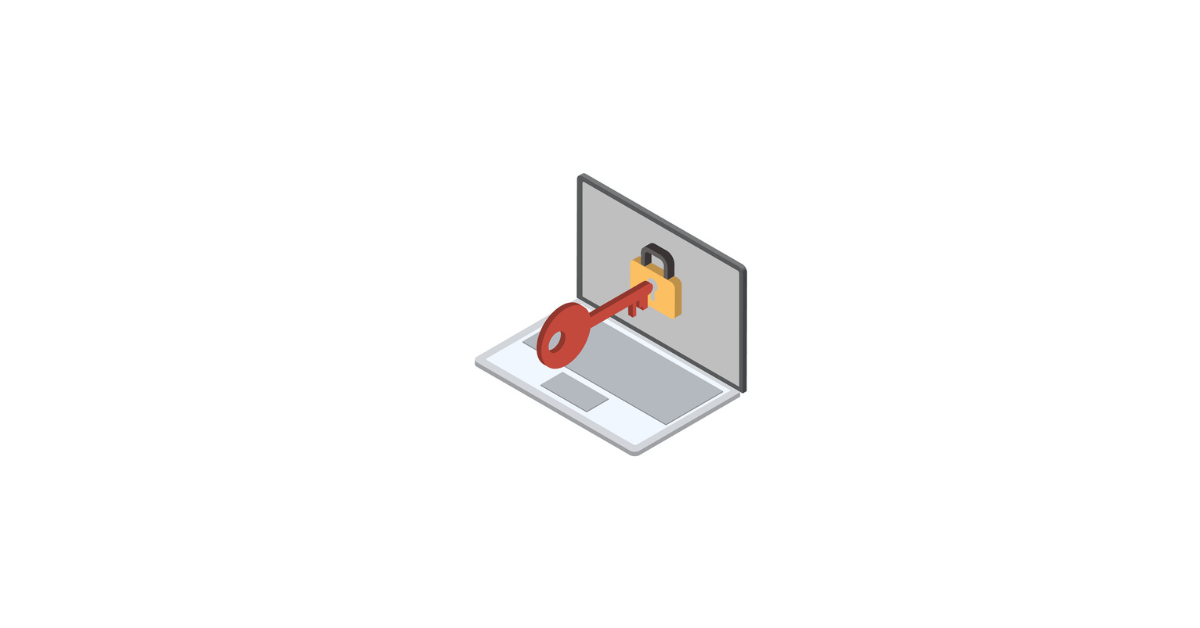The Benefits of Penetration Testing
Let’s face it: discovering that cybercriminals have accessed your organization’s sensitive data is a nightmare no business wants to face. But failing to prioritize cybersecurity makes this risk all too real. This is where the benefits of penetration testing come into play. Penetration testing identifies vulnerabilities in your IT infrastructure, websites, and applications, allowing you to address them before attackers can exploit them.
Without it, you could face the daunting task of notifying partners, clients, and vendors about a breach. Worse, your company could suffer public scrutiny, expensive emergency recovery costs, ransomware attacks, data breaches, lawsuits, and even government fines — all while struggling to rebuild a shattered reputation.
Ask yourself this: Would your organization survive the fallout of a catastrophic cyber attack?
By proactively securing your network with penetration testing, you can prevent data loss, safeguard your IT systems, and maintain client trust. The benefits of penetration testing include identifying weaknesses before hackers do, reducing downtime, and ensuring your business continues to operate smoothly. It’s an essential investment to protect your organization from the devastating consequences of cyber attacks.
With Data Breaches and Ransomware on the Rise, Is It Time for a Pen Test?
The increasing demand for penetration testing, or “pen testing,” is driven largely by threats from automated criminal hacking. Today, it’s not whether an organization will be hacked, but when.
This is precisely where pen testing services come into play. Many businesses are now turning to pen tests to identify and address cyber attacks, threats and vulnerabilities proactively before hackers can exploit them. Our pen test is a real-world exercise designed to reveal how easily bad actors can access, steal, or lock down specific data within your organization. We’re also looking for red flags such as outdated operating systems, misconfigured security settings, software flaws, risky user practices, and much more to determine how well your current IT company has managed your systems.
We’ll report our findings and help you remediate any issues. The engagement may continue with a custom-tailored plan to ensure your team maintains proper cyber security hygiene.

Common Pen Test Findings
Our penetration testers regularly find the following issues:
Vulnerability Management
- Unpatched or Outdated Software
- Security Patch & Vulnerability Management Issues
- Exposure to Known Vulnerabilities
Identity and Access Management (IAM/CIAM)
- Weak Passwords
- Failure to Follow Identity & Access Management Best Practices
- Lack of Multi-Factor Authentication (MFA)
- Default Credential Use
Configuration and Technical Controls
- Misconfigured Security Settings
- Weak Network Perimeter Defense
- Open Ports
- Unsecured APIs
- Improper Session Management
- Insufficient Logging and Monitoring
Data Security
- Inadequate Encryption
- Serious Data Leaks
Application Security
- Insecure Coding Practices
- Lack of Input Validation
- Insufficient Access Controls in Applications

Social Engineering and Human Factors
- Phishing Susceptibility
- Employee Lack of Training and Awareness
- Susceptibility to Pretexting and Impersonati
- Poor Physical Security Leading to Social Engineering
Malware Defenses
- Poor Malware Detection
- Insufficient Endpoint Protection
- Weak Email Filtering
- Unpatched Software Vulnerabilities
- Inadequate User Training
- Insufficient Network Segmentation
- Lack of Behavioral Analysis
- Weak Access Controls
- Ineffective Backup Strategies
- Insufficient Incident Response Plans
Comprehensive Security Assessment
- Information to Inform Your Cybersecurity Decision-Making
- Lack of Regular Security Audits and Assessments
Incident Response and Recovery
- Absence of a Defined Incident Response Plan
- Poor Communication During Incidents
- Lack of Regular Incident Response Drills
- Inadequate Disaster Recovery Planning

Third-Party Risks
- Inadequate Vetting of Third-Party Vendors
- Lack of Continuous Monitoring of Third-Party Security Posture
- Insufficient Contractual Security Requirements for Third Parties
Cloud Security
- Misconfigured Cloud Services
- Inadequate Monitoring and Logging of Cloud Environments
- Lack of Encryption for Cloud Data
- Poor Identity and Access Management in Cloud Environments
Mobile Device Security
- Lack of Security Controls on Mobile Devices
- Insufficient BYOD (Bring Your Device) Policies
- Vulnerabilities in Mobile Applications
AISN Pen Testing Services
At AISN, we support our clients with services that scrutinize the security position of their networks and applications while aiming to fortify their defenses.
Web Application Penetration Testing (External and Internal)
- Identifies exploitable vulnerabilities and weaknesses.
- Reassures clients and users of account security.
- Detects potential backdoors into internal networks.
- Finds insecure coding practices (e.g., SQL injection, cross-site scripting).
- Assesses authentication, authorization mechanisms, and session management.
- Identifies insufficient input validation and output encoding practices.
- Detects security misconfigurations and unnecessary services.
- Evaluate the effectiveness of cookies handling and secure file upload mechanisms.
- Uncovers insecure direct object references (IDOR) and improper error handling.
- Checks for information leakage and Cross-Site Request Forgery (CSRF) vulnerabilities.
- Assesses the security of APIs and third-party libraries/components.
- Identifies weaknesses in the application’s logic and business processes.
- Evaluates the use of secure communication protocols (e.g., HTTPS) and their implementation.
- Identifies potential security risks in the user interface and client-side code.
- Ensures compliance with relevant security standards and best practices (e.g., OWASP Top Ten).
Network Penetration Testing (External and Internal)
- Utilizes the PTES penetration testing framework, aligned with NIST 800-115 guidance and industry-standard tools such as Core Impact and Metasploit.
- Assesses the security of your network infrastructure by identifying vulnerabilities and potential attack vectors.
- Evaluates the effectiveness of your security controls and measures.
- Provides actionable insights to strengthen your network defenses and mitigate risks.
- Simulates real-world attack scenarios to test your network’s resilience and response capabilities.
- Identifies misconfigurations in network devices (e.g., routers, switches, firewalls).
- Tests for the presence of unauthorized devices and rogue access points.
- Evaluates the strength of network segmentation and isolation practices.
- Assesses the adequacy of logging and monitoring systems.
- Checks for weak or default credentials on network devices.
- Tests the effectiveness of intrusion detection and prevention systems (IDS/IPS).
- Evaluates the use of secure communication protocols within the network.
- Identifies potential data leakage points and unprotected sensitive information.
- Ensures compliance with relevant security standards and best practices.

Wireless Network Penetration Testing (physical, on-site testing)
- Utilizes industry-standard tools such as airman-ng, airodump, airplay-ng, and aircrack-ng.
- Provides a comprehensive assessment of your wireless network’s security, identifying vulnerabilities and potential attack vectors.
- Delivers actionable insights to enhance your wireless network defenses and mitigate risks.
- Tests for common misconfigurations and weaknesses in WiFi network design and architecture.
- Determines if cybercriminals can hijack WiFi sessions remotely (e.g., sitting in the parking lot).
- Discovers if your guest network serves as a backdoor into your internal network.
- Identifies unauthorized access points and rogue devices connected to the network.
- Assesses the strength of WiFi encryption protocols (e.g., WPA2, WPA3) and detects weak encryption configurations.
- Evaluates the effectiveness of network segmentation and isolation practices.
- Checks for vulnerabilities in wireless client devices that could be exploited.
- Tests the susceptibility of the network to denial-of-service (DoS) attacks.
- Identifies weak or default credentials used for wireless network devices (e.g., routers, access points).
- Assesses the adequacy of wireless intrusion detection and prevention systems (WIDS/WIPS).
- Determines if physical security controls for wireless access points are adequate.
Social Engineering
- Utilizes industry-standard tools like Maltego, the Social Engineer Toolkit, and Core Impact’s phishing capabilities.
- It employs phishing, USB drops, social media, and phone and in-person methods.
- Mimics real-world threat actors’ attack strategies.
- Tests employees’ skills, awareness, and cyber defense knowledge.
- Assesses the effectiveness of existing security awareness training programs.
- Evaluates the organization’s incident response to social engineering attacks.
- Identifies gaps in physical security that can be exploited by social engineers.
- Analyzes the susceptibility to pretexting and impersonation attacks.
- Determines the effectiveness of internal policies and procedures against social engineering.
- Measures the impact of social engineering attacks on organizational operations.
Firewall and Routers Testing
- Assesses the appropriateness of the configuration of the organization’s perimeter firewalls.
- Review the existing firewall rules for proper configuration and construction.
- Review firewall rules documentation to ensure alignment with relevant security compliance requirements.
- Recommends enhancements to the firewall configuration and implementation.
- Review the IT Firewall Standards to determine alignment with applicable industry best practices.
- Tests firewall performance under simulated attack conditions to evaluate resilience.
- Identifies and addresses any vulnerabilities in firewall firmware and software.
- Ensures that logging and monitoring are appropriately configured for firewalls and routers.
- Evaluate the effectiveness of firewall and router redundancy and failover mechanisms.
- Assesses the segmentation and isolation capabilities of the firewall configuration.
- Verifies that access control lists (ACLs) are correctly implemented and effective.
- Examines the configuration of VPNs and remote access controls associated with firewalls and routers.

Dark Web Search
- Utilizes open-source intelligence (OSINT) gathering via TOR and dark web search engines.
- Identifies leaked data, such as usernames, passwords, email addresses, and personal data.
- Monitors for stolen intellectual property, including proprietary information and trade secrets.
- Detects compromised financial information such as credit card numbers and banking details.
- Tracks threat actors and gathers intelligence on their activities.
- Evaluates the organization’s exposure to the dark web.
- Provides actionable intelligence with detailed reports and recommendations.
- Ensures anonymity and security during the search and intelligence-gathering process.
Other Pen Tests
Mobile Application Penetration Testing
- Identifies vulnerabilities in mobile applications.
- Tests for insecure data storage, insufficient encryption, and improper session handling.
Cloud Security Penetration Testing
- Assesses the security of cloud environments.
- Tests cloud configurations, access controls, and data protection mechanisms.
Physical Penetration Testing
- Tests the physical security controls of an organization.
- This includes attempts to gain unauthorized physical access to facilities, secure areas, or data centers.
Red Teaming
- Simulates a full-scale, real-world attack scenario.
- Involves a team of ethical hackers attempting to breach the organization using various techniques and tools.

API Penetration Testing
- Evaluate the security of Application Programming Interfaces (APIs).
- Tests for improper authentication, authorization flaws, and insecure data transmission.
IoT Penetration Testing
- Assesses the security of Internet of Things (IoT) devices and networks.
- Identifies vulnerabilities in IoT device configurations, communications, and firmware.
Embedded Systems Penetration Testing
- Tests the security of embedded systems and firmware.
- Identifies vulnerabilities in hardware-software integration and secure boot processes.
SCADA/ICS Penetration Testing
- Assesses the security of Supervisory Control and Data Acquisition (SCADA) and Industrial Control Systems (ICS).
- Identifies vulnerabilities in critical infrastructure systems and their networks.
Network Segmentation Testing
- Evaluates the effectiveness of network segmentation controls.
- Tests for potential pathways that could allow lateral movement across segmented networks.
Client-Side Penetration Testing
- Tests the security of client-side applications, including web browsers and desktop applications.
- Identifies vulnerabilities that could be exploited from the client side, such as script injection or insecure data handling.
Password Audit
- Evaluates the strength of passwords used within the organization.
- Tests for weak, default, or reused passwords and assesses policy compliance.
We do a range of different penetration tests. Please reach out if you do not see the test you need.
Proactive Threats Management: Act Before an Attacker Does
A pen test is an essential component of any organization’s cybersecurity strategy. By identifying vulnerabilities before an attacker does, you can take proactive steps to remediate them and reduce the risk of a successful cyber attack. With a better understanding of the pen testing process and the types of testing available, information security engineers can make more informed decisions about the appropriate testing strategy for their organization.
Need help acting before an attacker does? AISN routinely offers penetration tests for clients in the private and public sectors, and we can perform one for you, too.
About the AISN Pen Testing Team
AISN’s certified penetration testing team has extensive experience in network and application consulting across multiple industries that handle sensitive data, including the U.S. Department of Defense, large healthcare organizations, and state governments. Our security and risk specialists excel in solving complex assessment challenges and leading large-scale organizations to compliance at various levels.
The AISN team includes personnel with significant coding and scripting expertise, including writing and modifying exploit code for manual pen testing. Our team members are certified cybersecurity specialists who continually update and broaden their skill sets.
The Benefits of Penetration Testing for your Organization
Running regular pen tests against the network (how often depends on your business) gives you insights into real-world threats that may impact your network security and provides solid benefits. The test also exploits any vulnerabilities and provides the next steps for remediation.
The benefit of routine penetration tests allows you to safely test your system’s resistance to external hacking attempts by simulating the actions of an actual intruder. Operational weaknesses, outdated security policies, insecure settings, bad passwords, code mistakes, software bugs, service configuration errors, etc may cause attempts to exploit vulnerabilities.
Here are five reasons why your organization would benefit from routine network penetration testing:

Identify and Prioritize Risks
Performing regular penetration tests allows your organization to evaluate web applications and internal and external network security. It also helps you understand what security controls are necessary to maintain the level of security your organization needs to protect its people and assets. Prioritizing these risks gives organizations an advantage in anticipating and preventing malicious attacks.
Prevent Hackers From Infiltrating Systems
Penetration tests are much like practicing for a real-life hack by a hacker. Performing regular penetration tests allows you to be proactive in your real-world approach to evaluating your IT infrastructure security. The process uncovers holes in your security, allowing you to remediate any shortcomings properly before an attack happens.
Mature Your Environment
Continuing to mature the security posture within your organization’s environment is a great way to maintain a competitive advantage against others in your industry. It demonstrates to your clients that information security and compliance are paramount for your organization and that you continuously strive for optimum security.
Avoid Costly Data Breaches and Loss of Business Operability
Recovering from the aftermath of a data breach is no doubt expensive. Legal fees, IT remediation, customer protection programs, loss in sales, and discouraged customers can cost organizations millions of dollars. Regularly scheduled pen tests are a proactive way to stay on top of your security and can help prevent the financial loss of a breach while protecting your brand and reputation.
Comply With Industry Standards and Regulations
Penetration tests help address the compliance and security obligations mandated by industry standards and regulations such as PCI, HIPAA, FISMA, and ISO 27001. Having these tests performed regularly demonstrates due diligence and dedication to information security, all while helping you avoid the heavy fines associated with non-compliance.
See How We’ve Helped Protect Industries Like Yours…Case studies are below!
- Firewall Assessment Achieves Compliance & Enhances Network Security for State Agency
- Assessment Enables State Agency to Improve Security Posture and Compliance
- AISN’s vCISO Solution Fortifies Historic Court’s Cybersecurity and Compliance
Need a Pen Testing Quote? AISN Can Help.
Many organizations can handle limited penetration testing tools with their internal IT teams, but few regularly test for current vulnerabilities. Take advantage of the benefits of penetration testing by working with an experienced cyber security partner to help fill your planning and testing gaps. If you have questions about security testing or need help implementing a pen testing program, contact AISN today for a quote.
Want to white label our pen test services? Let’s talk today!



